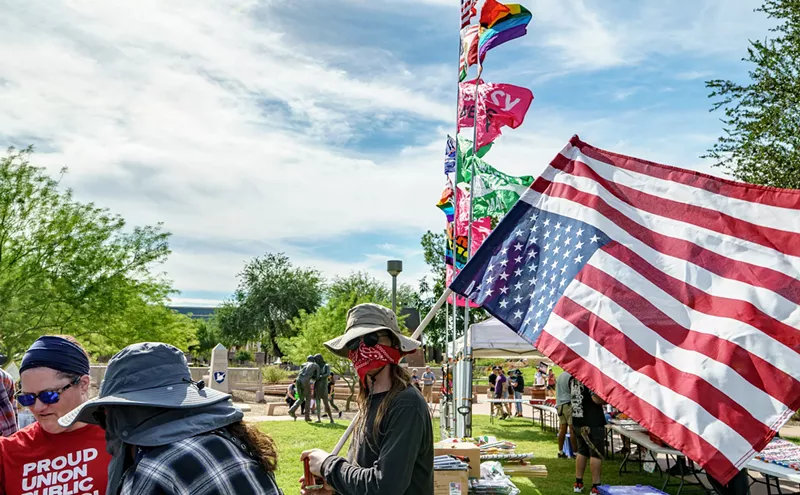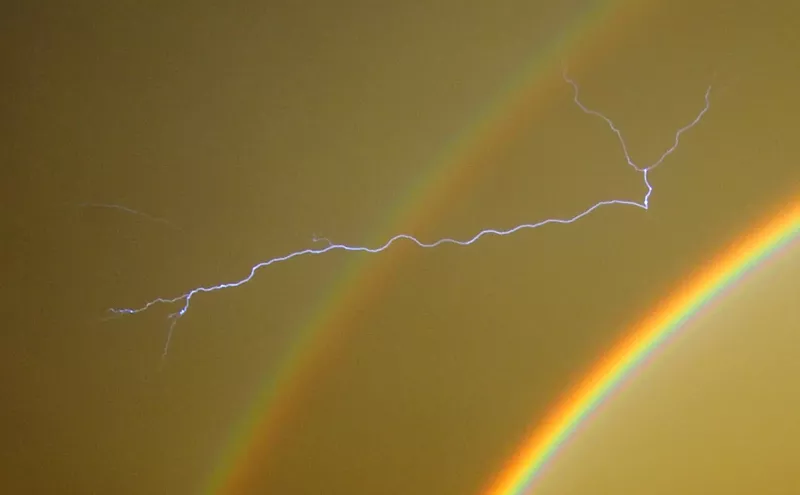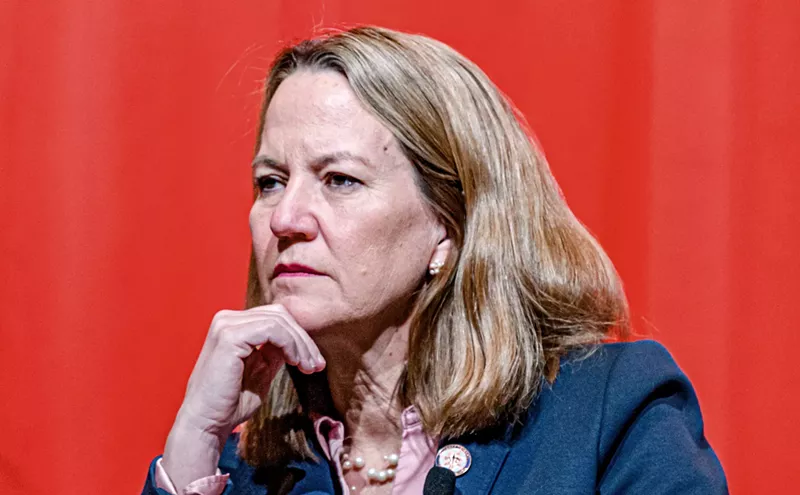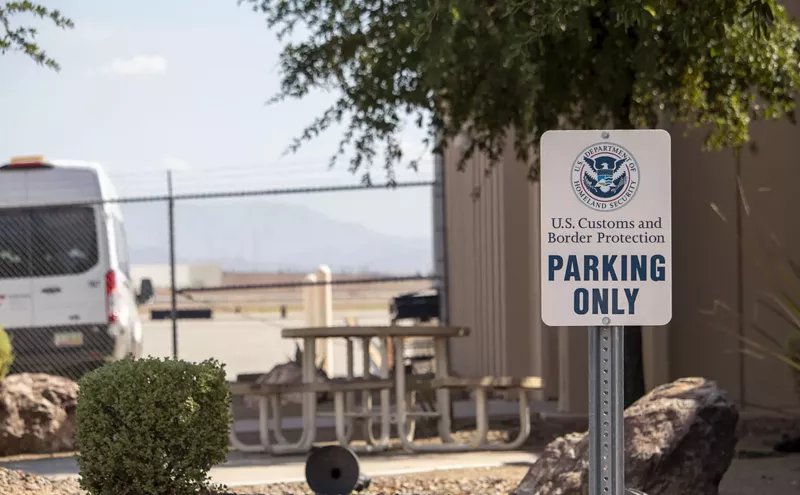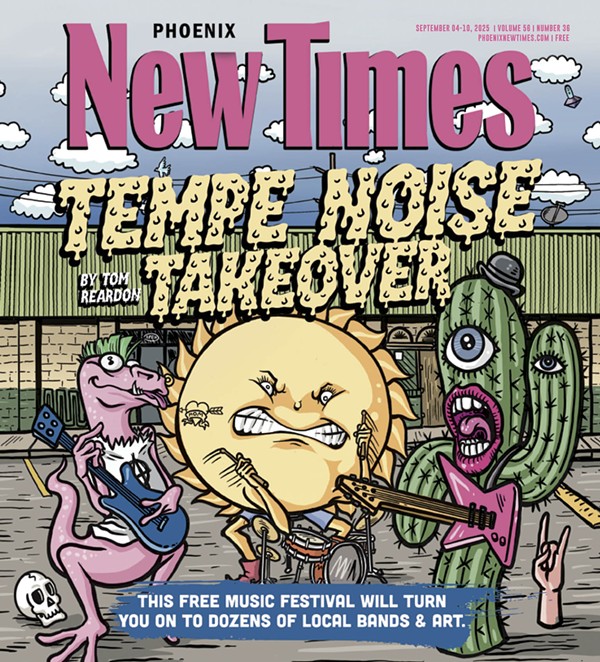Pinal County Sheriff Paul Babeu seemed unprepared for the intense national and local media scrutiny immediately thrust on him and his deputy, Louie Puroll, in the wake of our story "Pinalcchio" .
Babeu, an anti-illegal immigrant spokesman of increasing national prominence since the famous April 30 shooting incident involving Puroll, attempted the following defenses after we published the results of our four-month investigation into the shooting, allegedly by drug-smuggling men of color (Latinos or Native Americans, according to the deputy's account):
• New Times is a "conspiracy theory publication" that favors leaps of logic over bona fide reporting techniques, and the newspaper rushed to judgment that the deputy was lying within hours after Puroll reported being shot. (To the contrary, we started questioning the deputy's account only after law enforcement sources from myriad agencies contacted us with concerns in the days after the incident. We then spent hundreds of hours — many of them in dialogue with Pinal County Sheriff's Office officials — analyzing every aspect of the complex case.)
• The paper went "expert shopping," perhaps even going so far as to "hire" forensic pathologists, psychiatrists, crime-scene experts, and private investigators quoted in the piece. (Neither "shopping" nor "hiring" of experts occurred. We contacted the best, most experienced pathologists we could find — and they weren't all in agreement on certain aspects of the evidence — and asked them to analyze the case.)
• That he has "reopened" the case by sending Deputy Puroll's bloody T-shirt to the Arizona Department of Public Safety to be scientifically analyzed for gunshot residue evidence and other signs of a contact or near-contact wound. The testing, Babeu continues to insist, will "put this matter to bed once and for all" by proving that Deputy Puroll was truthful about getting grazed in the left flank by a marijuana smuggler who fired an AK-47 assault rifle at him. (Babeu has not reopened the case, which would mean re-interviewing his deputy, asking a litany of unresolved questions, and looking into all aspects of the prior investigation. What Pinal County has done is send an evidentiary item — the T-shirt — to a state crime lab five months after the fact for evaluation. That shirt is but one component of the case, a piece of a much larger puzzle. The shirt alone isn't proof positive of whether the deputy is lying or has been truthful.)
• That he was "befuddled" by statements, made by a DPS spokesman at a news conference last week, that state detectives were surprised when Pinal County relegated the DPS to processing the Puroll crime scene rather than investigating the entire matter. (Babeu told the Associated Press after last Wednesday's news conference that he disagreed with the DPS for making negative statements "at a time that there's questions about a piece of evidence, and they weigh in and try to distance themselves and raise additional questions.
• That the PCSO concluded months ago "the incident occurred as Deputy Puroll reported it." (True enough. Sheriff Babeu and his detectives seemed to decide from the moment they heard the deputy's "I've been hit!" 911 call that he was telling the truth.)
The New Times investigation raised doubts about Deputy Puroll's story and questioned parts of Pinal County's investigation.
Among the issues:
• The shortage of expended shell casings at and near the desert crime scene that may have been fired by Puroll's alleged assailants (going by the deputy's own account).
• The inability of a quasi-cavalry of law enforcement officers by land and by air to ever locate the half-dozen smugglers (Puroll said he probably hit one of the bad guys with gunfire) or any of the five backpacks supposedly filled with marijuana that the deputy reported seeing.
• The deputy's improbable account to Pinal County investigators about not wearing his backpack during the "shoot-out." (It remains unclear whether he was carrying it for some reason when the smugglers supposedly opened fire on him or whether he took it off during the clash. The backpack, which surely would have been damaged by the bullet that struck Puroll just above his left kidney, had he been wearing it, showed no signs of getting hit by gunfire.)
• Puroll's "interview" with Pinal County criminal investigators, which was more of an uninterrupted monologue than a search for the truth by the detectives — no follow-up questions of substance and no quest for telling details that may have aided the investigation ensued.
• New Times quoted nationally known forensic pathologists, some of whom concluded, on the basis of photographs, that Deputy Puroll's grazing wound was caused by a contact or near-contact shot from an undetermined caliber of bullet. Puroll, to the contrary, has told investigators that he was shot from at least 25 yards away.
• The angle of Puroll's wound, which was horizontal, does not mesh with the angle of the distinctly uphill shot from the first of at least two assailants the deputy described to investigators.
Sheriff Babeu continues to insist in interviews that his agency's chain of custody (paperwork that tracks the movement and location of physical evidence from the moment police obtain it) was followed in the Puroll case, specifically the bloody T-shirt.
New questions have arisen.
PCSO reports show that a sergeant confiscated Louie Puroll's rifle and backpack at a makeshift "command post" set up at Interstate 8 between Casa Grande and Gila Bend after a DPS helicopter pilot delivered the deputy there after extracting him from the desert.
The deputy remained at the location only briefly (he apparently spoke there with Paul Babeu, according to the sheriff's account) before an ambulance delivered him to the Casa Grande Regional Medical Center for treatment.
The sergeant, Aubrey Keck, wrote in a report that he turned over the deputy's rifle and backpack to Puroll's case agent, Detective Todd Nelson, at the command post.
There, Detective Nelson apparently also took Puroll's bloody T-shirt into his possession.
But New Times has seen no report authored by Nelson documenting exactly how, when, and from whom he got Puroll's T-shirt or any documentation on the shirt's condition and appearance.
Police detectives and others who have examined photographs of the shirt note that it appears to have been cut open in the area of the bloodstain.
"Whoever it was [who cut through the fabric] recklessly cut right through the bloodstain and bullet defects," says longtime homicide investigator Weaver Barkman (now retired from the Pima County Sheriff's Office and working as a private investigator in Tucson). "That distorted the most significant portion of the shirt."
Could the person who did the cutting have been on the DPS helicopter that took Puroll to the command post? The state agency's own report on the incident doesn't note specifics about the medical attention given the deputy during the short ride.
Records show that Detective Nelson released the T-shirt and several other evidentiary items to an ID tech shortly after midnight on May 1, eight hours after Puroll's "I've been hit!" 911 call.
The ID tech photographed some of the items, but not the shirt, at that time.
According to PCSO reports, the T-shirt was placed in the storage locker of the agency's Criminal Investigations Bureau. The ID tech didn't photograph the shirt until five days had passed, on the morning of May 5.
The stain on the shirt consists of both dried and seemingly moist blood.
"This shirt should have been carefully handled to avoid loss of gunshot residue and other trace evidence," Barkman says. "It should have been air-dried, and when dry, folded flat for storage, preserving the defect, bloodstain pattern, and any remaining gunshot residue."
Several people we interviewed for "Pinalcchio," including the four forensic pathologists, told us that if Deputy Puroll was wearing an outer garment at the time of the shooting — say, a long-sleeve shirt — the outer garment (not the T-shirt) would have captured most, if not all, of any gunshot residue.
Pinal County sheriff's Lieutenant Tamatha Villar commented in May that search-and-rescue deputies such as Puroll are supposed to wear long-sleeve shirts on duty as protection from the elements. And when New Times went with a county SWAT team to the "crime scene" last July, everyone on duty was wearing long sleeves.
Louie Puroll did have a long-sleeve heavy-flannel shirt/jacket wrapped around his backpack at the time of his "rescue," and it had faint bloodstains on it. But it showed no signs of getting hit by a bullet.
The deputy still isn't answering questions directly from the media. Agency spokesman Tim Gaffney says Puroll wants to speak publicly after the internal-affairs investigation into the shooting is completed.



